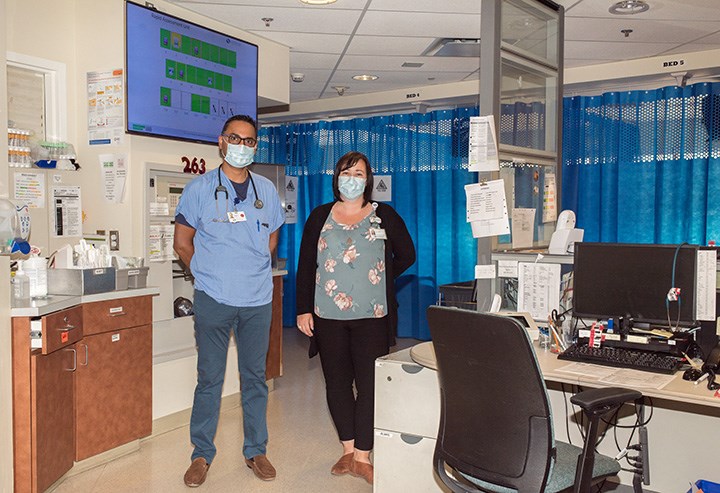This is the fourth in a series of articles exploring the challenges and impact of overcrowding in various departments at Southlake Regional Health Centre in Newmarket, one of Ontario's most overloaded hospitals.
What if you had a bad case of diarrhea and had to go down the hall to use a bathroom you share with 20 people?
What if 20 of your neighbours listened while your doctor gave you bad news?
What if you had to sleep with the lights on every night?
This is the case for the patients in Southlake Regional Health Centre's Rapid Assessment Unit (RAU).
The RAU — which was once the chemotherapy suite — is just one big, cramped room that was actually created to get patients out of the Emergency Department to help avoid overcrowding.
It contains 20 beds but when there are more than 20 patients — which is often the case — the excess beds spill into the hallway.
A thin curtain is all that separates patients from each other and sensitive conversations between doctor and patient are overheard by everyone.
The nurse's station is just a few feet away from patients and the room is lit via overhead lighting that remains on day and night, making sleep a challenge in an already busy, loud room.
"It's not an ideal space," said Dr. Gulshandeep Atwal.
The room has three bathrooms, two for patients and one for staff. If a patient has to use the facilities quickly, they have to get around the nurse's station and go down the hall.
Atwal said that the staff and the patients "suck it up" and try to make a difficult situation work but it's a challenge.
"Everything is so packed you can barely make your way to examine. It's a struggle every day. We've gotten used to it I guess and you make do with whatever you have," he said.
"We have our shifts, we come, we go, imagine being a patient stuck here for a week."
The RAU houses non-critical acute patients for three to five days. These patients might need in-depth testing, a few days of antibiotics or fluids before being discharged.
"It's not ideal even for the short term, it's a very tight area," said Katrina Scott, manager of RAU and of patient flow in the hospital. "But we do the best with what we can."
Not all of the curtained "rooms" have oxygen or suction — something that is important for acute patients, said Scott.
"I think this was a makeshift space to offload the ER, from here they would quickly get distributed. Now nothing gets distributed because everything is jam-packed. It doesn't matter which floor you go to, everything is jam packed," said Atwal.
According to Scott, the RAU is one of the busiest units in the hospital and its role has changed several times throughout the past decade.
At the height of the pandemic, it functioned as an Alternate Level of Care (ALC) unit. According to the hospital's manager of corporate communications, Kathryn Perrier, an ALC patient is someone who has completed the need for hospital care and is well enough to be discharged but has nowhere to go.
These could be elderly patients whose care needs are too high to go home and are waiting for acceptance into a long-term care facility but who either can't afford it or there is no space for them, added Scott.
Now it has reverted to a RAU.
The operating rooms tend to be less full in summer, which, Scott said, benefits the RAU because its excess patients can spill over into the surgical units. Otherwise, there are overflow areas open almost all of the time.
In her role as manager of patient flow, Scott said that more units would be helpful in preventing patients from being housed where they don't belong.
When that happens, patients don't have access to the correct care team, which delays their discharge, she said. An extended length of stay means patients must be moved around.
"It would be helpful if we could have more spaces so we could put people in their right bed with the right care team and the right position the first time," she said.
